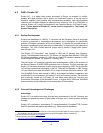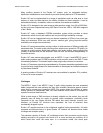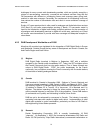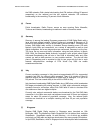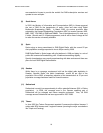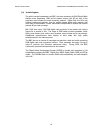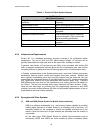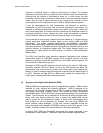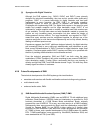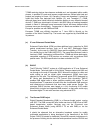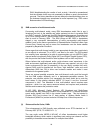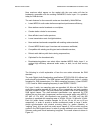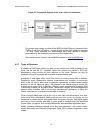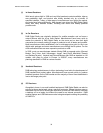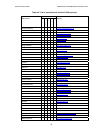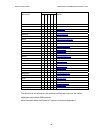DIGITAL RADIO GUIDE TERRESTRIAL TRANSMISSION SYSTEMS - DAB
27
(3) Synergies with Digital Television
Although the DVB systems (e.g., DVB-S, DVB-C and DVB-T) were primarily
designed for television broadcasting, they can and do provide radio (audio-only)
programs. DVB-T is a proven technology for digital television and has been
implemented in many countries. As DAB, DVB-T is, technically speaking,
sufficiently flexible to allow for delivery to portable and mobile receivers.
Challenges with implementing DVB-T for digital radio centre on the need for good
mobile and portable reception and its large bandwidth usage. DVB-T is not
optimised for mobile reception and no mobile or portable hand held receivers are
as yet available. The high data rates and wide bandwidth needed to operate the
system not only increases power consumption but also makes the design of
battery-powered devices difficult. The large bandwidth use required for DVB-T
means that many services must be multiplexed together for efficient use of the
spectrum and there is a risk that such multiplexes may not be fully utilised, thereby
leading to inefficient spectrum use.
Experience suggests that DVB-T platforms designed primarily for digital television
are increasingly likely to carry audio-only entertainment and information as well.
Most current implementations of DVB-T services for digital television target fixed
reception. Consumer-grade mobile DVB-T receivers are likely to be produced with
the aim of providing mobile television and multimedia services.
From the technical perspective, DAB and DVB-T are both using the same
modulations: OFDM. Therefore it will not be surprising to see common DAB/DVB-T
chips developing rapidly. Frontier Silicon announced that they are planning to
develop a single chip DVB-T and DAB decoder termed "Logie," for which they have
already signed a number of customers.
4.2.6 Future Developments of DAB
The technical developments of the DAB system go into two directions:
• associate audio services with flexible multimedia services including moving pictures
• multi-channel audio
• enhanced audio codec, DAB+
(1) DAB-Based Multimedia Broadcast Systems (DMB) T-DMB
Digital Multimedia Broadcasting (DMB) uses an MPEG-2 TS with additional error
protection (Reed-Solomon (188,204) code and interleaving as specified for DVB
services) transmitted in a DAB Stream Mode sub-channel. Bosch originally
proposed the use of MPEG-2 TS to carry one video service in a DAB Ensemble.
Subsequently there were proposals by Bosch and the collaborative project MINT
(funded by German BMBF) to use MPEG-4 video coding to fit several video
services in a DAB Ensemble. Later there was further development and promotion
of T-DMB in Korea, and a parallel development of the S-DMB system for satellite
BTH. T-DMB specifications were approved by WorldDAB (December 2004) and
were standardized at ETSI (June 2005).



